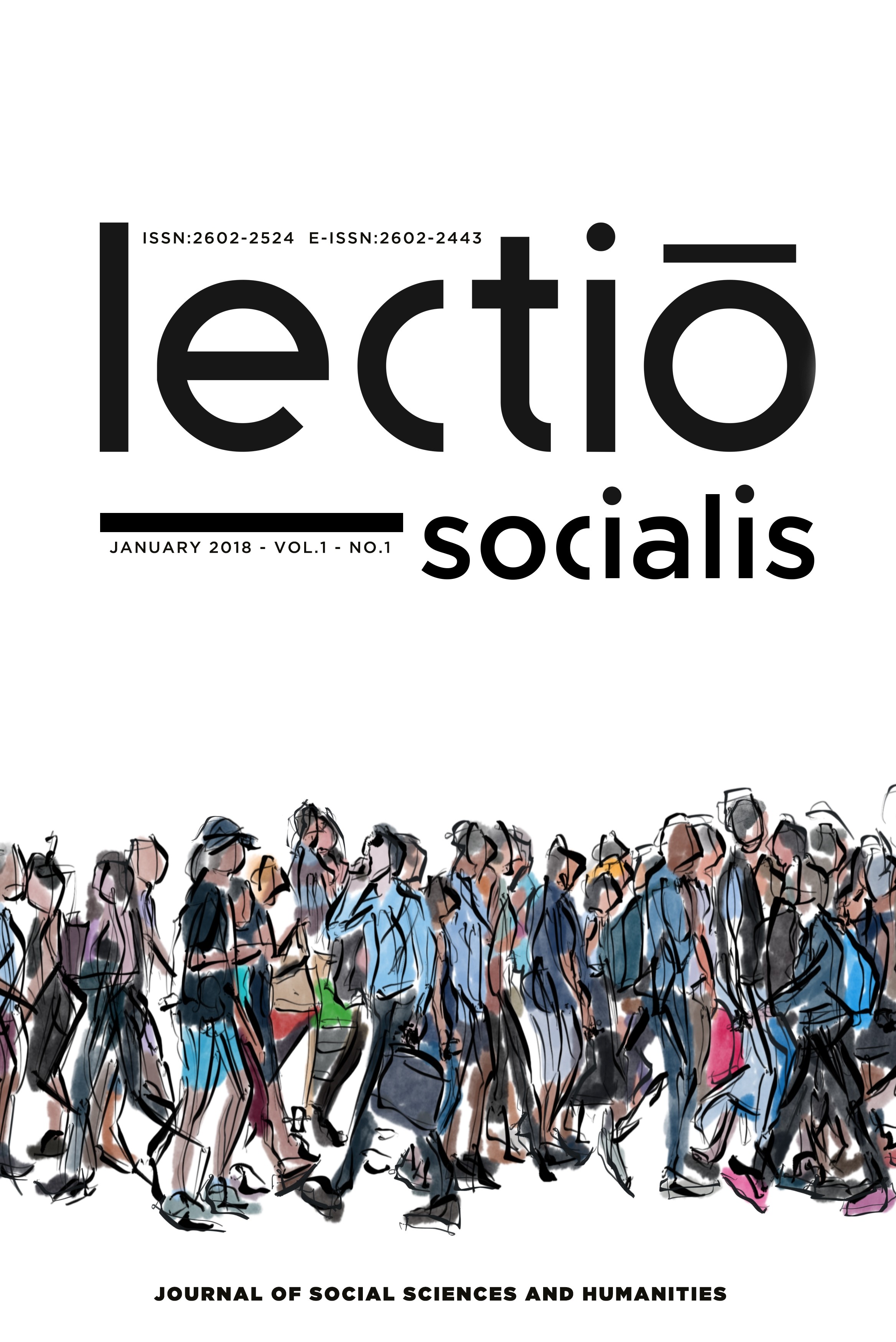Kostüm Tarihi Bağlamında Eteğin Moda Dizgesindeki Evrimi
İnsanlık tarihinin başlangıcından itibaren doğa koşullarından korunmak için ortaya çıkan örtünme ihtiyacı ve bu ihtiyacın giderilebilmesi için kullanılan kıyafetler zaman ilerledikçe sosyal, toplumsal, kültürel bir takım değerlerin yansıtıldığı, insanların toplumsal statülerindeki farklılıklarına işaret eden nesnelere dönüşmüşlerdir. Bu kıyafetlerden bir tanesi de giyim kuşamın önemli bir parçası olan etektir. Her ne kadar farklı coğrafyalarda yapılan bir takım arkeolojik kazılarda etek niyetine kullanılan parçalara rastlansa da etek modasının başlangıcı olarak Sümerler kabul edilmektedir. Bu çalışmada Sümerler’den başlayarak 19. yüzyıla kadar eteğin moda dizgesindeki evrimi ele alınmıştır. Kimi zaman tek başına bir kıyafet olarak giyildiği kimi zamansa tüm bedene giyilen ya da tüm vücuda yekpare bir şekilde saran bir kıyafetin parçası olduğu görülmüştür. Pratik kullanımı ve estetik ontolojisi açısından etek binlerce yıldır toplumların inançlarını, cinsiyet kimliklerini, insanların toplumsal ve politik statülerini, hayat görüşlerini yansıtması açısından önemli bir gösterge nesnesi olarak değerlendirilmiştir.
Evolution of Skirt in the Fashion System in Context of Costume History
Since the beginning of human history, the need for covering that has emerged to be protected from the conditions of nature and the clothes used for satisfying this need have turned into objects that reflect some social and cultural values and point the differences in people's social status as time goes on. One of these clothes is the skirt, an important part of clothing. Although some pieces used as a skirt found in some archaeological excavations in different geographies, Sumerians are accepted as the beginning of the skirt fashion. In this study; starting from Mesopotamian civilizations, in Ancient Egypt, Ancient Crete, Ancient Greek, Ancient Roman, Byzantine Empire; Medieval, Renaissance, Baroque, Rococo eras and in the 19th century, the evolution of the skirt in the fashion system of the Western world were discussed within the framework of the general clothing characteristics of the periods. The skirt, which was sometimes worn as a solitary dress, and sometimes appeared to be a part of a garment that is worn over the whole body or that wraps the whole body, was examined on the basis of ancient civilizations and periods. During this examination, no gender discrimination was considered until the Renaissance period. However, since the Renaissance period (15-16th century) (except for a kilt skirt), it was found that the skirt became a type of clothing used only by women. In line with the findings obtained in the research; it has been revealed that the skirt is an important daily life object reflecting the lifestyles of societies and people, the hierarchy between individuals and gender identities.
___
- Begiç, H. N. (2016). “Giyim-Kuşam Kültüründe Keçe Sanatına Tarihsel Bir Bakış”. SUTAD. 40, 287-297.
- Berkol, C. (2019). “Helen, Roma ve Bizans Ayakkabılarının Moda Tarihi Üzerindeki Etkileri”. Lectio Socialis. 3, (3), 87-100.
- Berkol, C. (2020). “Tarihsel Süreçte Kemer ve Kuşak Kullanımı”. Al Farabi International Journal on Social Science. 5, (1), 28-41.
- Çeliksap, S. (2015). “Giyim ve Modanın Kısa Öyküsü”. Aydın Sanat. 1, (1), 57-64.
- Flügel, J. C. (1930). The Psychology of Clothes. London: Hogarth.
- Karbo, K. (2009). Gospel According to Coco Chanel. Guilford, CT: The Globe Pequet Press.
- Kemper, R. H. (1963). A History of Costume. New York: Newsweek Books.
- Köse, H. (2011). Kültürel Siyasal Kimlikleşme Aracı Olarak Giyim Kuşam Modası, 38. ICANAS (38. Uluslararası Asya ve Kuzey Afrika Çalışmaları) Kongresi Bildiri Kitabı, Kültürel Değişim, Gelişim ve Hareketlilik (Cilt II) içinde 457-472. Ankara: Atatürk Kültür ve Tarih Yüksek Kurumu Başkanlığı Yayınları.
- Monet, D. (2011). Victorian Era Women’s Fashions: From Hoop Skirts to Bustles https://bellatory.com/fashion-industry/Fashion-History-Victorian-Costume-and-Design-Trends-1837-1900-With- Pictures adresinden 05.06.2020 tarihinde erişilmiştir.
- Pendergast, S. ve Pendergast, T. (2004). Fashion, Costume and Culture Volume I, II, III, IV, V. Farmington Hills: The Gale Group Inc.
- Pièces d’estomac brodées. (2019). Le Temps de Broder. https://www.letempsdebroder.com/articles/pieces-estomac-met/ adresinden 04.06.2020 tarihinde erişilmiştir.
- Planche, J. R. (1879). A Cyclopaedia of Costume Or Dictionary of Dress. London: Chatto and Windus.
- Rooney, A. (2005). A History of Fashion And Costume The Eighteenth Century Volume V. New York: Bailey Publishing Associates Ltd.
- Steele, P. (2005). A History of Fashion And Costume The Medieval World Volume II. New York: Bailey Publishing Associates Ltd.
- Steele, V. (2005) (ed). Encyclopedia of Clothing and Fashion Volume I, II, III. Farmington Hills, MI: Thomson Gale.
- The Byzantine Empire (2020). Lauren M. Lowell, Costume Designer. https://lowelldesigns.com/the-byzantine-empire/ adresinden 04.06.2020 tarihinde erişilmiştir.
- Thomas, P. (2018). Ancient Greek Costume History | Pictures showing how to recreate a typical female dress. Fashion History, Costume Trends and Eras, Trends Victorians - Haute Couture. https://www.fashion-era.com/ancient_costume/ancient-greek-fashion-hair.htm adresinden 06.06.2020 tarihinde erişilmiştir.
- Toklucu, K. G. (2015). Barok ve Rokoko Dönemlerinin Modaya Etkileri. Yüksek Lisans Tezi. T.C. Haliç Üniversitesi Sosyal Bilimler Enstitüsü, Tekstil ve Moda Tasarımı Anasanat Dalı Tekstil ve Moda Tasarımı Programı, İstanbul.
- Tortora, P. G. and Eubank, K. (1989). A Survey of Historic Costume. New York: Fairchild Publications.
- Welters, L. ve Lillethun, A. (2018). Fashion History: A Global View. New York ve London: Bloomsbury Publishing Plc.
- Başlangıç: 2017
- Yayıncı: Emrah Konuralp
Sayıdaki Diğer Makaleler
Kostüm Tarihi Bağlamında Eteğin Moda Dizgesindeki Evrimi
Muselmann ve Dohodyaga: Nazi ve Sovyet Toplama Kamplarında Yaşayan Ölüler
IŞİD’in İdeolojisi: Cihadi Selefilik
2008 Konut Kredisi Krizinden 10 Yıl Sonra Para ve Sermaye Piyasalarında Görünüm
